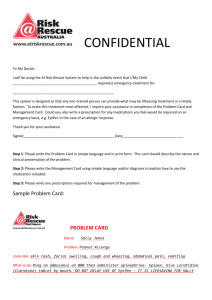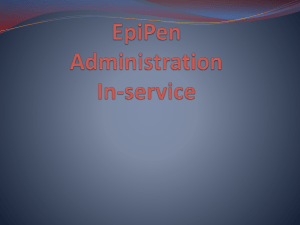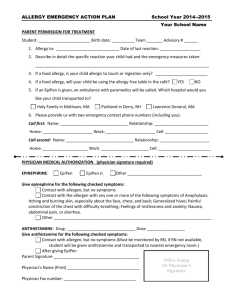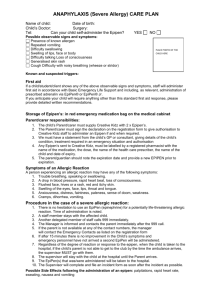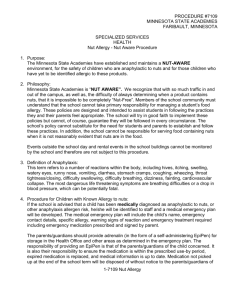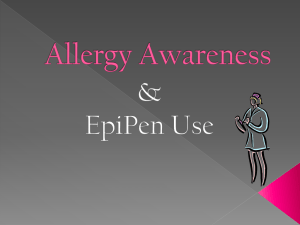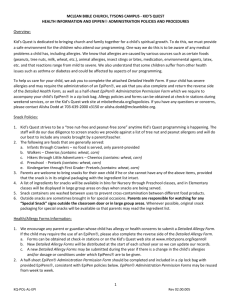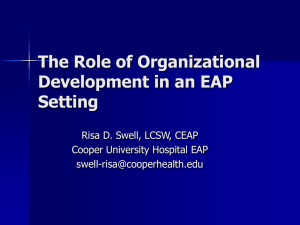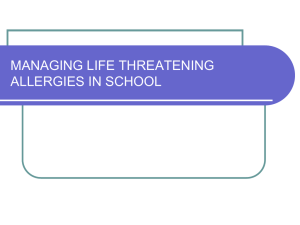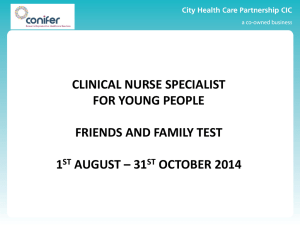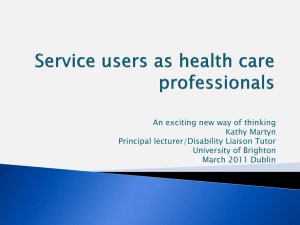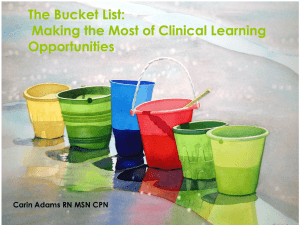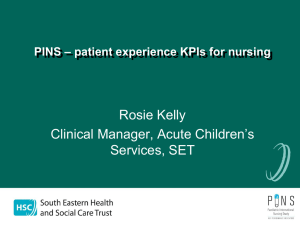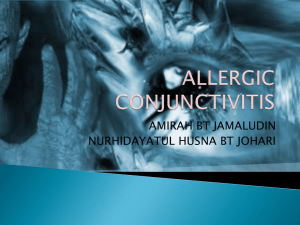EpiPen Administration
advertisement
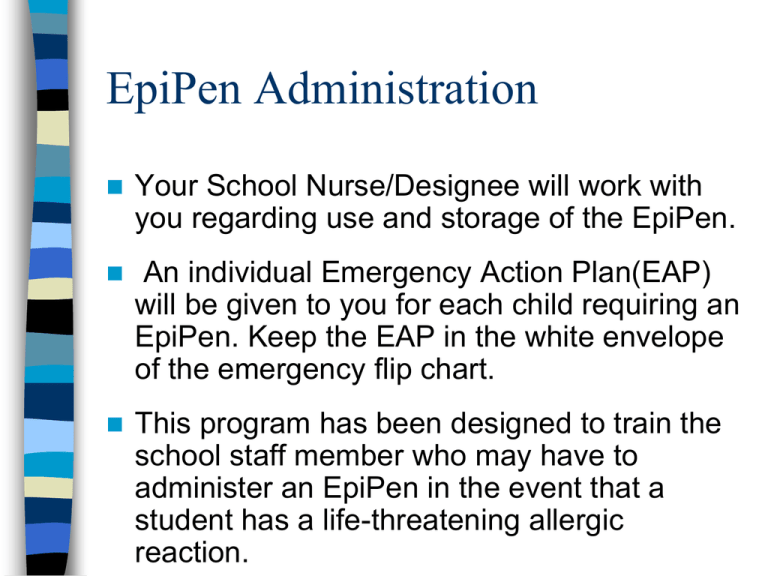
EpiPen Administration Your School Nurse/Designee will work with you regarding use and storage of the EpiPen. An individual Emergency Action Plan(EAP) will be given to you for each child requiring an EpiPen. Keep the EAP in the white envelope of the emergency flip chart. This program has been designed to train the school staff member who may have to administer an EpiPen in the event that a student has a life-threatening allergic reaction. Epinephrine is the treatment of choice for allergic reactions… Epinephrine… It quickly constricts blood vessels, raising blood pressure It relaxes smooth muscles in the lungs to improve breathing Epinephrine continued… It stimulates the heart beat It works to reverse the hives and swelling around the face and lips How is epinephrine stored? According to your school policy. Stable at room temperature until the marked expiration date – Do not freeze, refrigerate, or expose to extreme heat or sunlight…it will cause it to oxidize and go bad..and turn brown. How is epinephrine handled? Before using, make sure solution is clear and colorless Accidental injection into the hands or feet may result in loss of blood flow to the affected area and will require immediate treatment in the Emergency Room (ER) How is epinephrine handled? Be aware that after an injection there will be a needle extending from the end of auto-injector. After using epinephrine, the autoinjector should be placed back in the original container and given to EMS personnel to take to the ER. The 5 “RIGHTS” of epinephrine administration… Right student Right medication Right dose Right route Right time Right student… Identify each student with the known allergy. Familiarize yourself with each student’s EAP and know the location of the medicine. Be sure to bring the EpiPen on field trips for each student. Continue to communicate with the School Nurse/Designee through the school year regarding possible changes in the treatment for each student. Right medication… Epinephrine is available in an auto injector called an EpiPen Right dose… An EpiPen comes in TWO different doses: – EpiPen 0.3 mg (over approx.66 lbs.) – EpiPen Jr. 0.15 mg (under approx 66 lbs.) Make sure you have the right prescription dose for the child Right routes… The EpiPen is administered into the large outer thigh muscles On bare skin Through clothes Right time… Based on student’s symptoms and EAP e.g., hives spreading over the body, wheezing, difficulty swallowing or breathing, swelling in face or neck, tingling or swelling of tongue, vomiting, signs of shock, such as extreme paleness/gray color, clammy skin, loss of consciousness, or any other child-specific known symptom. Steps in EpiPen administration… Call for HELP! 911 Call School Nurse and Call 911 Have two adults (if possible) Have student sit down Look at the directions on the EpiPen It states: 1. 2. 3. 4. Form fist around auto-injector (black tip down) With your other hand, pull off gray cap. Hold black tip near outer thigh Swing and jab firmly into outer thigh so auto-injector is perpendicular (at 90 degree angle) to thigh. 5. Hold firmly in thigh for 10 seconds The EpiPen buys you 15 minutes of time… Activating emergency services via 911 immediately is critical Know who the CPR trained staff are in your building so that persons trained in life support can be dispatched to your location After EpiPen administration you must remember to… Notify nurse/designee. Document the time of administration Follow ISD/Facility policy regarding notification of parent/guardian regarding incident, student’s condition, and hospital destination. What about field trips? Being the ever-prepared teacher you are, you will see the nurse at least 2 days prior to leaving to review the student’s EAP and answer any questions you may have. Encourage parents of students with an EpiPens to attend field trips. Be sure you take the EpiPen and the EAP in the flip chart on field trip. Field trips cont. You must have telephone access to call 911 at all times while off school property with students A quick review… Case study You are the teacher in charge of a class you have just taken outside for a math problem. It’s spring and the flowers are blooming and the bees, unbeknownst to you, are buzzing. You have a child with a known bee allergy requiring immediate EpiPen administration if stung. You’ve made it a point, because you are an astute teacher, to check with your nurse to review your student’s EAP in the flip chart and secure his EpiPen before going outside. The unthinkable happens… What are the steps you would take? – Have student sit down and administer the EpiPen immediately – Keep student warm, reassured, and away from allergen – Send someone to call 911 – Send for the School Nurse You are now prepared to administer an EpiPen in a lifethreatening allergic emergency! Congratulations! Now all allergic children will have a safer environment at school and on field trips because you will know what to do.
